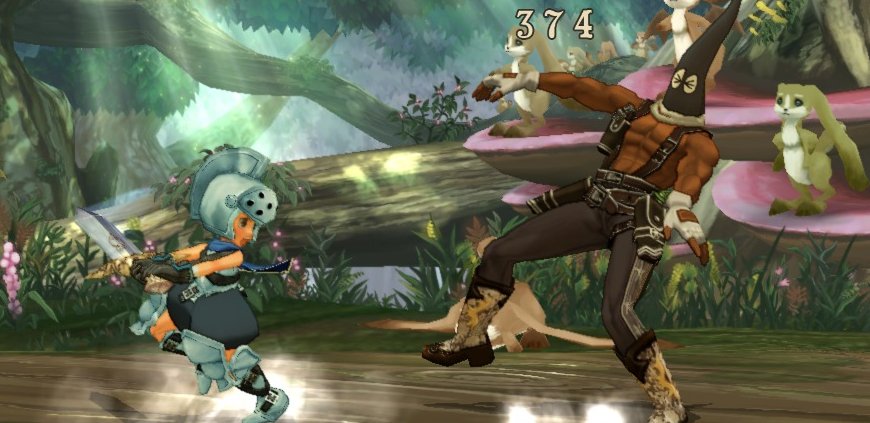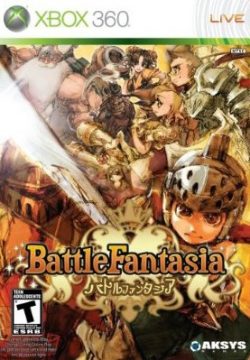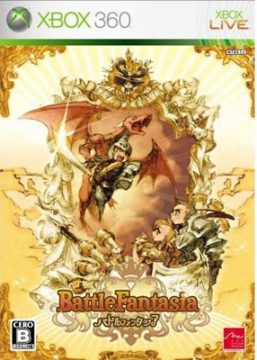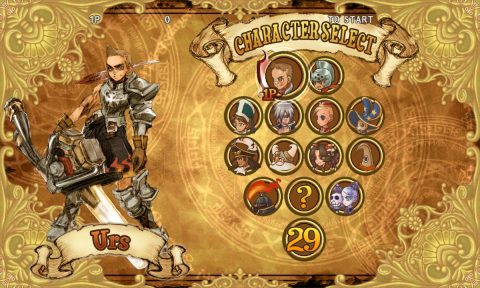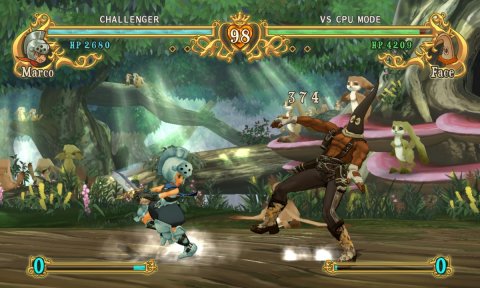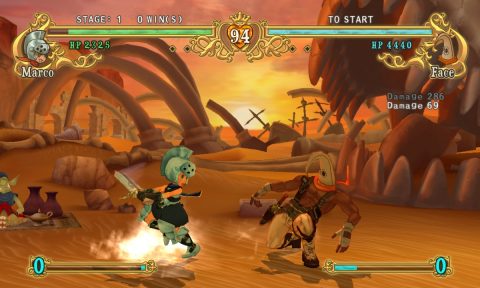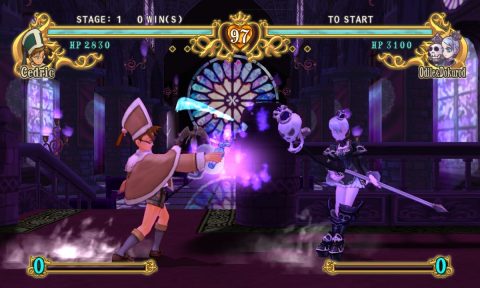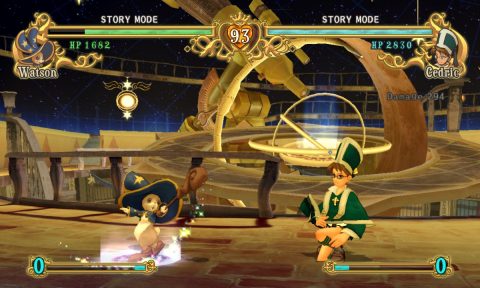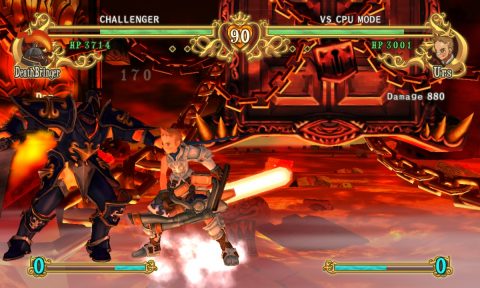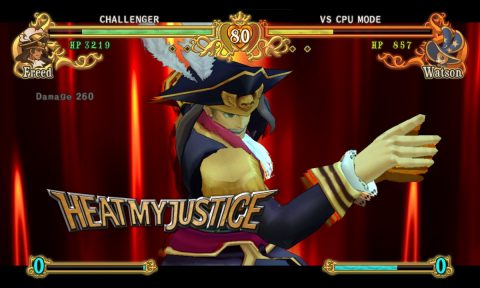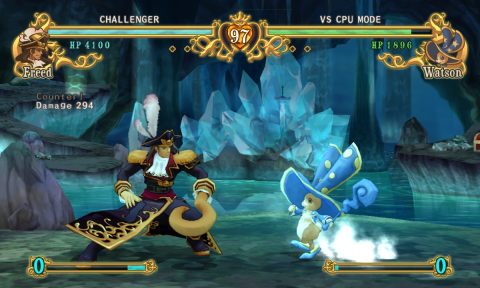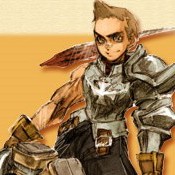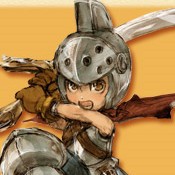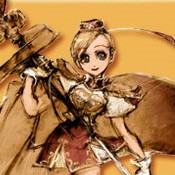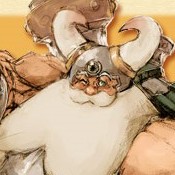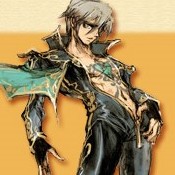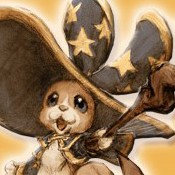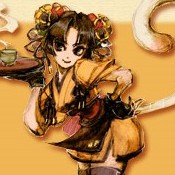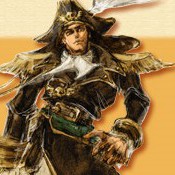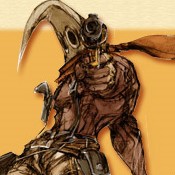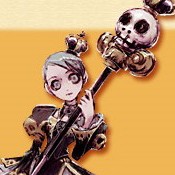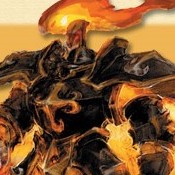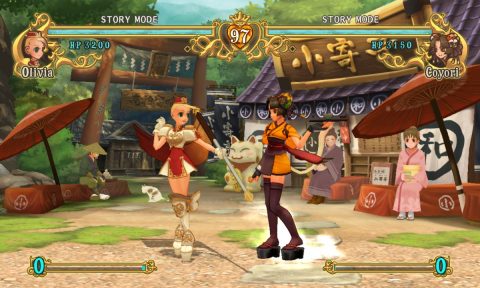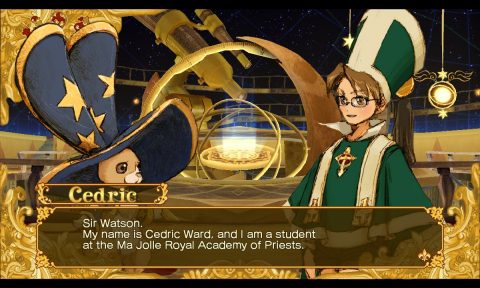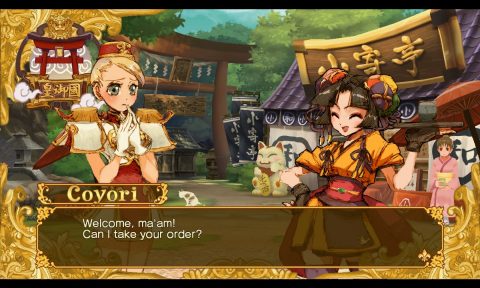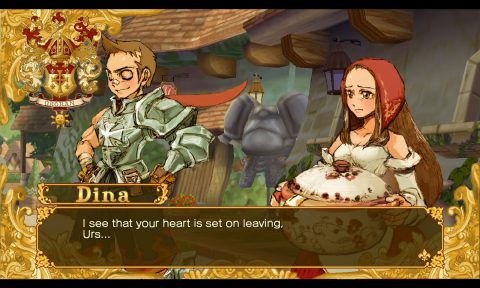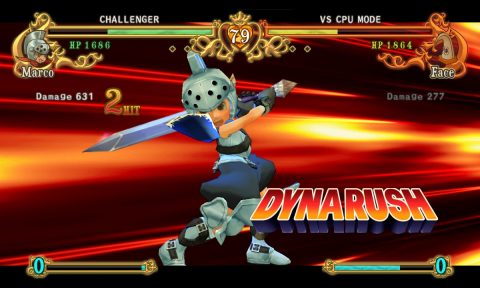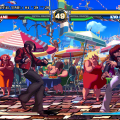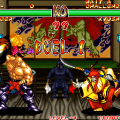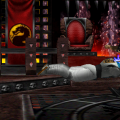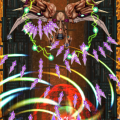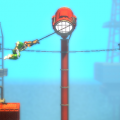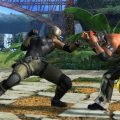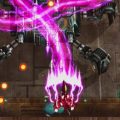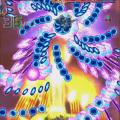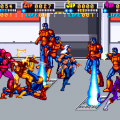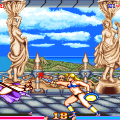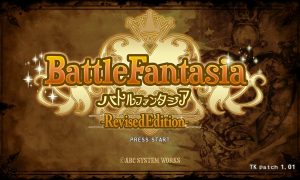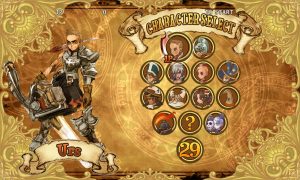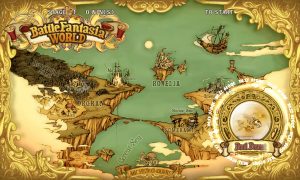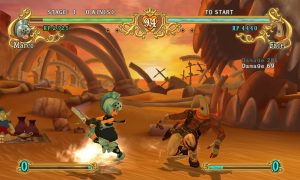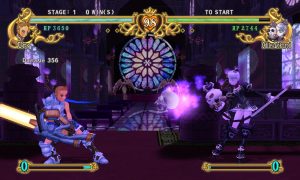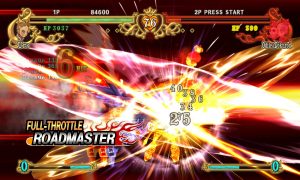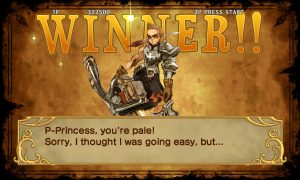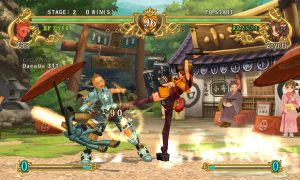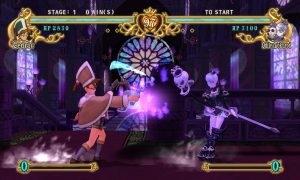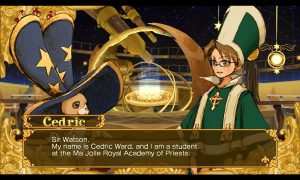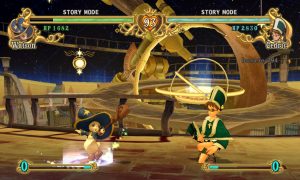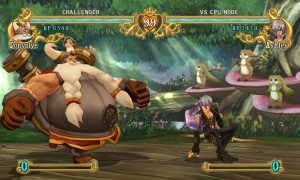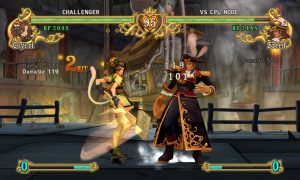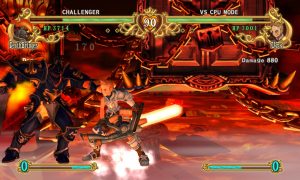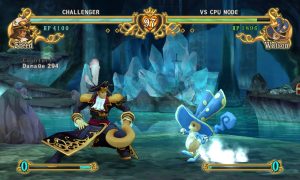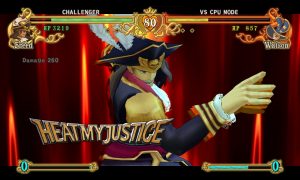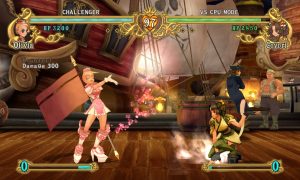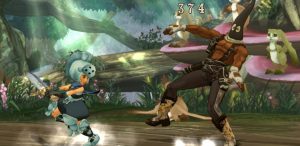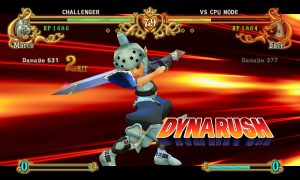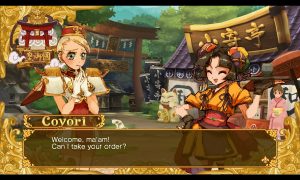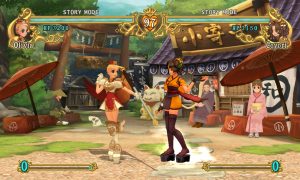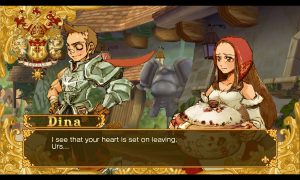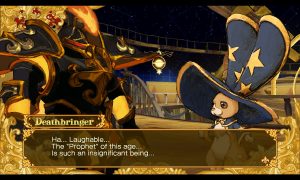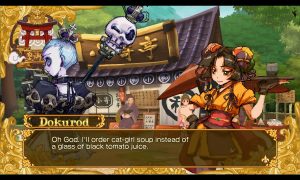The advent and popularity of 3D graphics around the mid 90s were a perplexing time for pretty much everyone involved. The wise old ways of 2D sprites were seen as aging and decrepit, crushed under the awkwardly shaped polygonal fist. Most companies responded with, hey, look, here’s your favorite 2D game, but in 3D! Some fared well, like platformers and action games, even if it took them a few years. Fighting games, however, were a different story.
The boom arguably started with Virtua Fighter, which was drastically different from Street Fighter II or any other numerous 2D fighters. From here, birthed the likes of Tekken, Soul Calibur, and Dead or Alive, games which focused mostly on close combat. In the meantime, Capcom and SNK and pals were trying keep up by developing their own 3D games, but keeping the same 2D gameplay mechanics as its predecessors, the first of which was Street Fighter EX. It didn’t quite work. The characters, which were previously well defined sprites, were now boxy approximations of their original designs. The backgrounds, the speed, the animations, everything just felt off. They continued with other such games in classic franchises, both passable (Fatal Fury: Wild Ambition) and execrable (Samurai Shodown: Warriors Rage for the PSOne.) Other 2.5D fighting franchises included the clunky but enjoyable Rival Schools: United by Fate (mostly known for featuring overwhelming amounts of BURNING HOT BLOODED SHOUNEN JUSTICE) and the forgettable Star Gladiator (mostly known for Hayate in Marvel vs Capcom 2.)
With the advanced technology in more recent years, as well as greater expensive, the developers had gotten a better grasp on how to do things right, with the likes of Street Fighter EX3 and King of Fighters: Maximum Impact. But while these games were quality, and were much better than their predecessors, they still impressed very few. 3D fighting game fans felt they didn’t take advantage of the added dimensions; 2D fighting game fans were annoyed that the control and speed still weren’t as precise as they should be.
With this in mind, it’s easy to understand why everyone collectively freaked out in 2007, when Capcom announced that the long-time-coming Street Fighter IV would also have fully 3D graphics, albeit still with 2D gameplay. The release of this fantastic title showed that gamers didn’t really have anything to worry about, because it really does play remarkably like the older titles, coupled with the advantages of 3D graphics. Yet maybe people wouldn’t have freaked out as much if they’d played Battle Fantasia.
Battle Fantasia was released in Japanese arcades in early 2007, and in 2008 for the PlayStation 3 and Xbox 360, with the console versions featuring online play. It’s a 2.5D fighter developed by Arc System Works, who is known worldwide as the guys behind the Guilty Gear series. While they’re some talented folk (and one of the few fighting game companies willing to create high res sprites), they’d dug themselves into something of a rut. The Guilty Gear game peaked with Guilty Gear XX in 2002, with the only follow-ups being minor revisions and misguided spinoffs. Their other fighting games were contracted by other companies – Hokuto no Ken (Fist of the North Star) by Sega, which was basically Guilty Gear with large, clunky characters and an awesome license; and Sengoku Basara X by Capcom, which was also basically Guilty Gear with an odd Striker-style system and characters from a game that no one outside of Japan cared about.
A bit like Guilty Gear, whose work was primarily the vision of one Daisuke Ishiwatari (who did the artwork, story, music, and even a few of the voices), Battle Fantasia is helmed by Emiko Iwasaki, one of Arc System Work’s artists. In addition to designing the characters and story, she also does the voice of Marco. (Daisuke Ishiwatari also plays the voice of the pirate Freed, but only in the gameplay segments. His story mode voice is different.) It’s also Arc System’s first game that steps outside the shadows of Guilty Gear to create something that feels a bit more fresh.
It’s hard to really call Battle Fantasia innovative though. Outside of the 2.5D look and fantasy setting, there’s nothing terribly “new” about it. There are two punch buttons, two kick buttons, a counter button, and a super meter bar. Like Guilty Gear, it features a relatively loose combo system and super moves that are easy to cancel into. Unlike Guilty Gear, there are no double jumps, no air dashing, no vertical screen scrolling, and no camera zooming. In fact, the camera is quite conservative, bulging only from the strict 2.5D perspective during super moves (where the move’s name is indicated with a unique font for each character) and certain throw attacks. The action is a bit slower than other Arc System games, while at the same time being speedier than Street Fighter III. It’s a good middle ground for a game that feels snappy without being too overwhelming.
In addition to the regular super moves, there’s also a Heat Up command, which will temporarily strengthen your characters, for a short period of a time, in exchange for one power stock. During the Heat Up period, some characters get familiars, or shields, and all of them have more powerful moves. There’s also a counter move called a “Gachi Match”, activated by the right shoulder trigger on the consoles, or the fifth button the arcade. It’s a bit easier to use that Street Fighter III‘s parry, but it’s also possible to whiff the counter if you’re careful and leave yourself open to damage. If you hold Forward and counter, you’ll execute a “Gachi Drive”, which will send them flying across the screen, opening up a potential for a juggle combo. Most characters also have charge-and-release attacks by holding down a button, so you can attempt to catch your opponent off guard with powerful (and potentially unblockable) attack.
So Battle Fantasia is far from shallow, even if it doesn’t outwardly seem that way. It’s actually refreshing that it isn’t quite as inundated with an overwhelming number of status bars and gauges – there’s your life meter, and your super attack gauge, and that’s it.
The visuals carry a storybook fantasy style quality, without somewhat muted colors. The feel isn’t that far off from the cult classic game Princess Crown (the spiritual predecessor to the more popular PS2 game Odin Sphere.) Technically, it’s not all that impressive for an HD console – it looks nice, but the character models and backgrounds are completely shamed by other 3D fighters like Soul Calibur IV, and completely blown away by Street Fighter IV. This is mostly because Battle Fantasia was originally developed for the Taito X2 arcade board – strong enough to run the game in 720P, but not strong enough to pull off anything truly impressive. If nothing else though, it’s nice to finally see a 2D fighter run in widescreen. The character proportions feel a bit different than what most might be used to, but it still plays quite comfortably.
The “rounds” here are dubbed “chapters”, and each character has a hit point counter below their life bar, with every hit generating a number indicating the damage that was done. Naturally, the larger characters have more hit points than the smaller ones, but it’s really just a trick, because the damages scale depending on who’s fighting. That doesn’t mean it’s a not a bit unbalanced, because hulking characters like Donvalve will still crush tiny little guys like Watson, but, damage-wise, it’s really no worse than, say, a Potemkin versus Chipp match from Guilty Gear.
The character portraits are drawn somewhat sketchily and it’s a little awkward to see them animated during the story cutscenes, because they’re basically still drawing with mouth movements and other adjustments to make them look like they’re breathing. The cast is a lively bunch though, which is a notable hallmark of the Guilty Gear games. The music, unfortunately, is really quite boring and is content to play softly in the background amidst all of the yelling combatants.
Characters
Urs
The main character of Battle Fantasia, as it were, Urs has a doofy haircut but wields some kind of magical electrical chainsaw, which is one of the coolest weapons seen in just about anything for a long time. Listening to the poor Japanese announcer trying to pronounce his name is a bit sad. His father is the legendary Dyna, who disappeared years before.
Marco
Urs’ little brother is a diminutive chap with a speech impediment, but that doesn’t stop him from wielding a gigantic sword and slicing through his enemies Shoryureppa style. He’s also accompanied by a dragon named Char-Siu who shows up in Heat Mode.
Olivia
The requisite princess, Olivia looks more like a member of the local high school color guard, and attacks with a gigantic flag.
Donvalve
Basically imagine a gigantic Santa Claus, complete with the jolly expression and demeanor, and you’ll have the hulking viking Donvale, who takes up apprxoimately 90% of the screen’s height.
Ashley
The requisite emo kid with a dark past or something. Looks and feels like a combination of Rock Howard, K’ and Freeman, with a bit of vampiric-style angst tossed in there for good measure.
Cedric
This girly boy charge character also wields a gigantic mace, which he somehow hides in that unfortunate man skirt of his.
Watson
You know how every other anime has a cutesy mascot? Now you can play as one in a fighting game! Except he’s tiny and nearly useless! He has a weird mechanic where he levels up or down based on how much damaging he’s receiving or taking.
Coyori
So, Arc System Works basically took their own Jam (a Chinese waitress) and turned her into a cat girl, thus we have Coyori. To be fair, she plays nothing like Jam, but it’s too close to be a coincidence.
Freed
Freed is basically Captain Hook, except a thousand times more intimidating and with a much, much, much larger hook that would make any other pirate envious. He also has an awesomely named super called “Heat My Justice”.
Face
Face is reminiscent of Faust from Guilty Gear, just because he has a weird mask over his head. He wields a pair of pistols, which he generally only brings out during special modes.
Dokurod & Odile
Dokurod is actually an evil staff of some kind (“doku” means “poison” in Japanese.) Considering there’s not much he can do on his own other than lie in the corner and scheme maniacally, he created an evil looking humanoid who just happens to look like a gothic lolita version of Olivia, probably just so the developers didn’t need to model a new character.
Deathbringer
As the name implies, Deathbringer brings death, and is the final boss. He has a second ultimate form with approximately thirty thousand HP, and a mega countdown attack that will totally obliterate you if you let it hit zero. This form can only be damaged when in Heat mode.
The Story Mode template for fighting games has always been goofy – one character shows up on the scene, briefly converses with another, all the while concocting some kind of halfway nonsensical reason for them to right. Now, multiply that amount of dialogue substantially, and you have an idea of how much text AND voice is in Battle Fantasia.
Initially, Battle Fantasia was only released in English for the Xbox 360. It’s speculated that the reason Aksys didn’t initially release this in North America for the PlayStation 3 is because they didn’t have the budget to redub such huge amounts of dialogue, and wanted to leave it in Japanese. Sony of America, which at that time was still concerned that Americans choked at the thought of listening to any language other than English, tended to not approve of things like this. This also happens to be the reason why Atlus cut the voices out of the story mode in Arcana Heart. Microsoft, on the other hand, happened to not care, and neither did Sony of Europe (being that Europe has dozens of languages anyway), which is how those versions got released. The long and the short of it is, Battle Fantasia‘s story mode is so expansive that it caused one of the versions to not be released in North America, at least for awhile, which maybe says that someone somewhere went a bit overboard. (It was eventually released digitally once the PlayStation Network started gearing up, but the Xbox 360 version is still the only retail release in North America.)
So why is it there to begin with? Well, Battle Fantasia tried to portray itself as a fighting game with superficial RPG elements, and RPG elements to Japanese developers seems to mean “unnecessarily long for the sake of keeping players busy so they can’t trade it in too quickly”, its inclusion seems a bit more logical. Technically, there isn’t any grinding. However, when you select a player in Story Mode, it will tell you what percentage of the cinemas you’ve seen. In order to get 100%, you need to beat every character, lose to every character, and even go down alternate story paths by executing very specific actions in certain battles. This will probably drive completionists mad.
But storyline isn’t entirely superfluous either. New fighting game franchises often have problems trying to make their rosters stand out from the crowd. Arc System Works’ games have always avoided this problem, since their designs are usually so out there in the first place. So,it’s nice to flesh these guys out, giving them actual voices beyond yelling special attacks, or dialogue outside of generic win quotes. Plus, it’s almost all worth it for Deathbringer’s story, where he basically just stomps from place to place, killing everyone he comes across, mostly because he’s The Bad Guy and just kind of a jerk. The huge emphasis on the story mode also hinted at the direction Aksys would take in later titles, including subsequent Guilty Gear games, and (especially) the Blazblue series, whose story became so expansive it eventually spun off whole visual novels.
Even for everything working in its favor, Battle Fantasia doesn’t quite feel like it runs with the big boys – the only innovation is its graphic design, and the fact that, for a 2.5D fighter, it controls perfectly. But, rather quaintly, it hearkens back in the fighting game scene of yesterday. Not the early 90s, where every two bit operation was trying to make their own Street Fighter II, but the mid 90s, where anyone could cobble together a fairly decent fighting game. (For fun, try Breakers, or Asura Blade, or even Suikoenbu.) There was a huge variety of stuff coming out back then, from all kinds of publishers, and Battle Fantasia feels like one of those – filler, perhaps, but damn good filler.
Beyond its initial arcade and console release, Battle Fantasia was brought back to the arcades on the NESiCAxLive system. It includes all of the tweaks and enhancements from the console ports, minus the expansive story mode, plus a few other adjustments. This version was then ported back to consumer use for Windows platforms, under the name Battle Fantasia: Revised Edition, with all of the single player console stuff added back in.
